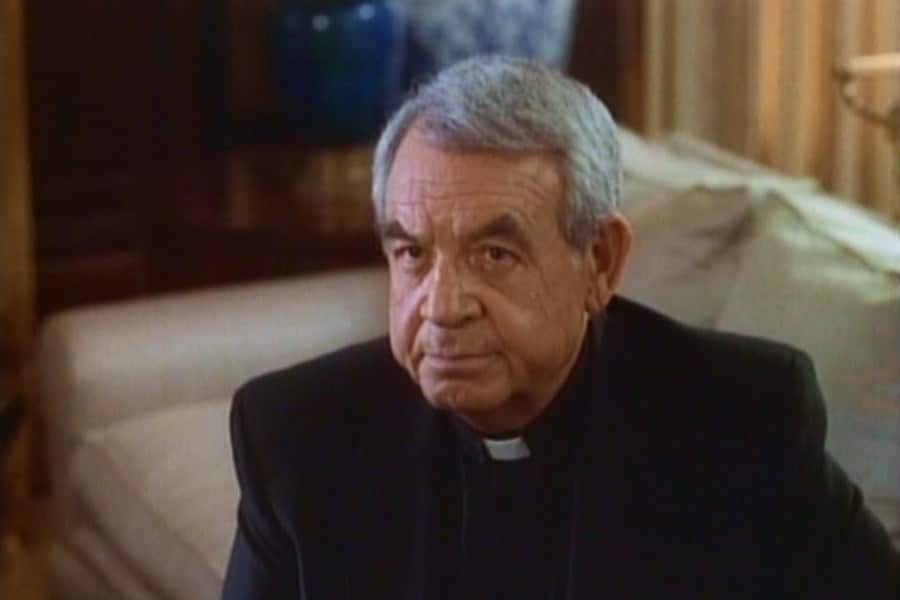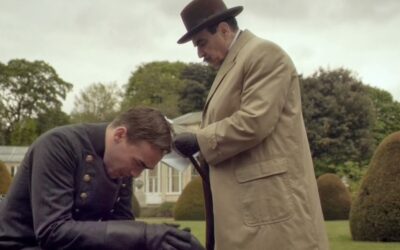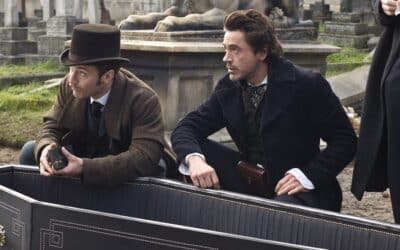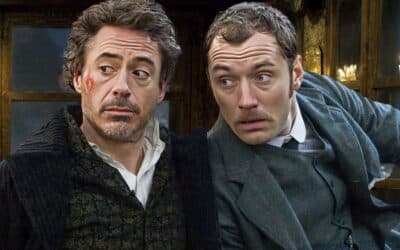
Priest Detectives
The collar meets the crime in an unexpected mash-up that’s been percolating through the pages of mystery novels for decades and occasionally spilling out onto the screen: the priest detective. A contradiction in terms, perhaps, but these sleuthing men of the cloth have been blessing the crime genre with their distinctive presence, offering a dash of sanctity with their deductive reasoning.
Toss out any ideas of a soft-spoken padre patiently waiting in the confession booth. These clergy are hitting the streets, solving mysteries with a Bible in one hand and a magnifying glass in the other. It’s the kind of thing that might make purists balk—after all, what business does a servant of the divine have meddling in the murderously messy affairs of mortals? But this unlikely combination has proven to be as irresistible as it is unconventional.
The godfather of this peculiar brand of crime-fighter could well be G.K. Chesterton’s Father Brown. Short, unassuming, and often underestimated, this Catholic priest has been outwitting criminals since 1910. Chesterton’s series of short stories paved the way for this unique character archetype, featuring a protagonist whose understanding of human nature is as crucial to crime-solving as any physical evidence. Father Brown’s ability to unravel the mortal sins of man has made him a lasting fixture in the genre, so much so that the BBC would later resurrect him in the form of a hit TV series that began in 2013, charming audiences with its period settings and cleverly plotted episodes.
Not to be outdone by their British counterparts, American authors also took a swing at the concept. Take Ralph McInerny’s Father Dowling, for instance. This parish priest from the fictional town of Fox River, Illinois, became the center of a mystery series that started in the mid-1970s. He brought a little Midwestern charm to the ecclesiastical detective trope. The books were engaging, and they caught enough attention that NBC took the premise to the small screen with “Father Dowling Mysteries,” starring Tom Bosley of “Happy Days” fame. It wasn’t quite a ratings miracle, but for three seasons, Father Dowling and his nun sidekick, Sister Stephanie, proved that the cloth had more than enough cunning to crack cases.
Diving deeper into the sacred sleuthing scene, Ellis Peters introduced a historical twist with Brother Cadfael in the 1970s. A Welsh Benedictine monk with a past as a Crusader, Cadfael turned his worldly knowledge and herbalism skills to solve crimes in the Middle Ages. The books offered readers a whiff of the past, rich with historical detail and the added intrigue of monastic politics. The character eventually leaped off the page and into the living room with ITV’s “Cadfael” series, which ran in the 1990s and featured Sir Derek Jacobi as the titular monk, his performance as meticulously crafted as one of Cadfael’s own potions.
But let’s not let the men hog the altar. Sister Fidelma, created by Peter Tremayne in the 1990s, is an Irish nun who’s not just versed in the ways of the Lord but also the intricate intricacies of the ancient Brehon laws. Her adventures bring together the twelfth-century settings with a razor-sharp mind for justice. While Sister Fidelma hasn’t made the jump to the screen yet, the detailed world-building and knotty puzzles of the books offer more than enough cinematic material for an adaptation.
The intrigue surrounding the priest detective trope doesn’t stop at their ability to puzzle out whodunits—it’s the moral complexity and the internal conflicts they must navigate that truly add depth to the narrative. These characters operate on a plane that requires them to reconcile their spiritual duties with the often-gritty realities of detective work. It’s a tightrope walk between the secular and the divine, and it’s fascinating to watch how each character balances the call of their faith with the demands of the mystery at hand.
Take William Brodrick’s Father Anselm, a barrister turned monk who uses his legal background to untangle the complex webs of guilt and innocence in the “Father Anselm” series. The psychological tension of his cases mirrors the inner tension within Anselm himself as he wrestles with the concepts of justice and redemption—themes as ancient as the church and as timely as the latest headlines.
And while the topic may seem ripe for the kind of moralizing that could turn a crime caper into a sermon, these narratives usually resist the temptation. Instead, they use their protagonists’ spiritual backgrounds to ask bigger questions about humanity, sin, and redemption without sacrificing the page-turning suspense of a good mystery.
These holy detectives are not content with the mysteries of faith—they delve into the mysteries of crime with a dogged persistence that belies their peaceful professions. It’s this juxtaposition that provides a fascinating lens through which to view the traditional detective story, setting it apart from the multitude of private eyes and police inspectors that typically populate the genre.
The success of these characters in literature has been mirrored, to an extent, on screen. Television adaptations like “Father Brown” and “Cadfael” have found audiences eager for a taste of mystery with a side of moral introspection. However, the translation from page to screen is not always a smooth one; the inner life of a character, so richly explored in prose, can be challenging to convey in the visual medium of television or film.
Regardless of the medium, there’s no denying that the priest detective occupies a unique niche in crime fiction. Whether it’s Father Brown’s quiet but incisive observations, Father Dowling’s affable wisdom, Brother Cadfael’s medieval medicine, or Sister Fidelma’s legal acumen, these characters enthrall readers and viewers alike. They reaffirm that even within the sacred halls of the church, there’s room for the secular thrills of a well-crafted whodunit.
The market for mysteries shows no signs of cooling down, and it seems there’s always room for another priest detective to take up the rosary and the revolver (metaphorically speaking, of course). For audiences that crave their crime-solving with a touch of the transcendental, these characters provide a confession of a different sort: an admission that sometimes, the most fascinating puzzles are those that probe the enigmas of the human soul.
While the congregation of priest detectives may not be vast, their following is devout. The tension between their holy orders and the unholy deeds they investigate continues to provide fertile ground for storytellers. Whether through the stained glass of a church window or the gritty streets where sins are committed, these spiritual sleuths shine a light on the darkness, asking not just whodunit, but why—and in doing so, they invite a reflection on the nature of morality itself.
As long as there are secrets to unearth and sinners to redeem, one can expect the priest detective to be there, Bible in one pocket, notepad in the other, ready to offer absolution or handcuffs as needed. It’s a testimony to the enduring appeal of these characters that they continue to confess new layers of humanity through each mystery they solve. Crime may be as old as the Ten Commandments, but the quest for justice, it seems, is eternal. And so, the sleuth in the cassock remains an evergreen figure in the canon of crime fiction, one confession at a time.
More Detective Features
The Characteristics of Hercule Poirot
Peculiar habits and unmatched deductive abilities
Detective Novels
The pinnacle of sleuthing
The Best of Sherlock Holmes
Four Sherlock Holmes Mysteries You Need to Read



